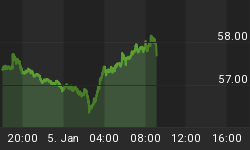At New Era Investor, we very much hold to the maxim that the past is the key to the future. In the arena of money, the study of price action and human response offers insights into the great cycles of investment as one asset class gives way to another and then again in reverse.
Such was the case with silver from the period 1919 to 1948. Readers will be more familiar with the great spike of 1980 followed by the deflationary bust that recently ended. But the previous cyclical spike of 1919 is not so well known. Using the average annual fixing price from London, the great silver deflation of silver can be seen in the chart below (if anyone has access to the monthly or weekly data I would appreciate an email!).

It is a sorry tale as an inflationary peak of $1.34 per ounce was hit in 1919; this is at least $15 in current dollars. It got so bad that Great Britain (and no doubt other countries) debased its silver coin content from 0.925 to 0.500 purity in 1920.
But then we had a spiral all the way down to 25 cents per ounce followed this ending in 1932 giving a total price drop of about 82%. A bad time to be holding silver and only surpassed by the great equity crash of 1929. Fans of Elliott Wave analysis will note the three-wave ABC correction that completed that crash.
Does this sound reminiscent of the 93% drop from the next cycle high in 1980? In fact, prior to 1919, there had been another silver boom and bust about 1864 when silver hit nearly $3. That's about 55 years between 1864 and 1919 and 61 years between 1919 and 1980. This is what is commonly known as the Kondratyev wave, that great economic cycle in which generational sentiment and money flows between hard and paper assets during inflationary and deflationary times.
The Kondratyev wave moves up and down about every 53 years on average. The upwave is characterised by increasing interest rates and commodity prices, i.e. inflation (or reflation in a fiat money system). The downwave is the opposite as interest rates and commodity prices drop, i.e. deflation or disinflation.
It is commonly agreed that 1919 roughly marked the top or plateau of one inflationary upwave and 1948 marked its low (using interest rate data). The years 1980 and perhaps 2001 are the corresponding dates for the last downwave just witnessed. I say perhaps because I realise that other students of Kondratyev think the current downwave is not complete. I take the view that interest rates and commodity prices determine the bottom. I think the commodity data suggests this is the case and interest rates will also soon begin a multi-decade up trend.
However, some sharp-eyed reader may comment that silver did not bottom in 1948, but in 1932. How can that be if 1948 was the suggested bottom for the last Kondratyev wave? The answer is simple - government intervention.
Without it, we would have expected silver to rally in a typical B wave formation. Thanks to government intervention, it did. However, a drop back to the 25 cents range in a final C-wave by 1948 was nullified by our leaders (note our ABC in the chart above only refers to sub waves in our proposed A wave).
Two acts of government saw to it that the price of silver was artificially propped up. The Thomas Act of 1933 which allowed foreign debtors to pay at the inflated price of 50 cents an ounce and more importantly, the Silver Purchase Act of 1934 which effectively nationalised silver and attempted to fix the price at $1.29 per ounce. This led to massive buying by the US Treasury that saw a sustained rebound in silver prices from thereon in.
So, we said the past was the key to the future. With the Kondratyev Wave we have one such marker. But to that we must add the wildcard of government intervention. As we face the next multi-decennial inflationary wave, how will government affect the price and investment potential of silver and indeed gold?
From 1948 to 1980, government loosened its grip on the metals but didn't let go. How will we fare in the next 30 years? With the added inflationary spice of the baby boomer retirees and Peak Oil, how government acts to increase or decrease the returns on your precious metal investments will be a key decision maker.
These are the types of issue addressed in my newsletter New Era Investor. Please go to www.newerainvestor.com to buy the first issue as a sampler or take up the whole annual subscription.
Comments are invited by emailing the author at newerainvestor@yahoo.co.uk
Happy investing and government-watching!















